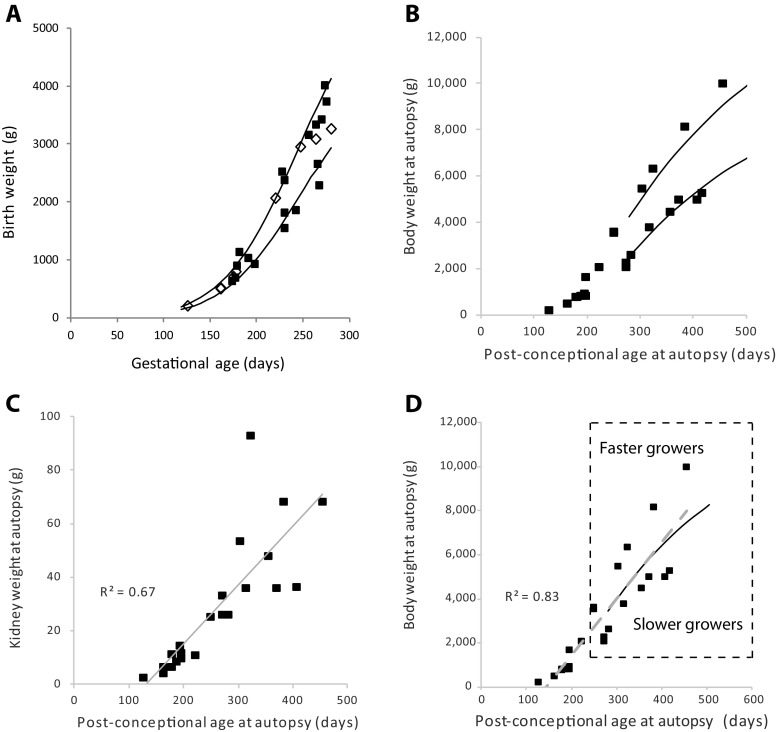Fig. 1.
Relationship of body weight to gestational and post-gestational ages. a Birth weight in relation to gestational age. The solid lines show the 10th and 90th percentiles for normal intrauterine growth. The cohort conformed to expected values for intrauterine growth. Those that survived <1 week are shown as open diamonds. Those that survived >1 week are shown by closed squares. There was no differences in the rate of intrauterine growth between those who died soon after birth and those who survived longer. b Body weight at death in relation to post-conceptional age. The 5th and 95th percentile range for the average value for boys and girls as shown by CDC growth charts is shown by the solid lines (assuming that normal gestation lasts 280 days). The cohort growth rates conformed approximately to the expected ranges. c Relationship between body weight and kidney weight at autopsy. Kidney weight was linearly related to body weight over the time period. d Faster growers versus slower growers. The plot is the same as in Figure 1b above. The solid line shows the 50th percentile growth curve for average boys and girls. The gray long-dashed line shows the correlation line between body weight and post-conceptional age for the cohort as a whole (R2 = 0.83). These lines overlap, suggesting that on average the cohort represents an approximation of normal growth. To extend this analysis to determine to what effect slower versus faster growth would have on podometric measurements we compared a group that fell above the 50th percentile (“faster growers” [n = 6]) with a group that fell below the 50th percentile (“slower growers” [n = 8]) as shown by the box delineated by the dashed line. The comparison data are shown in Table 2. No statistically significant differences in podometric parameters were observed between the “faster” and “slower” growing groups, suggesting that differences in the growth rate within the range observed would not have a large impact on podometric parameters, although this would affect kidney weight

